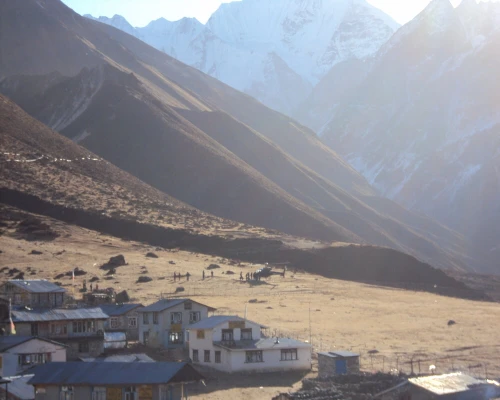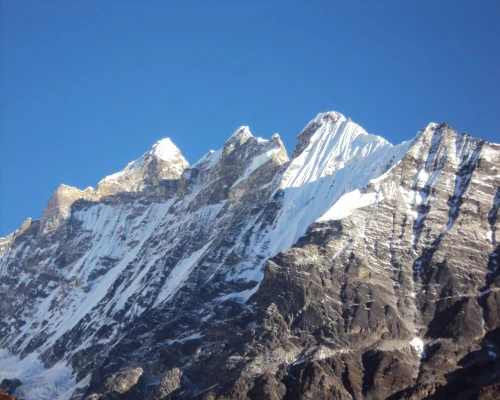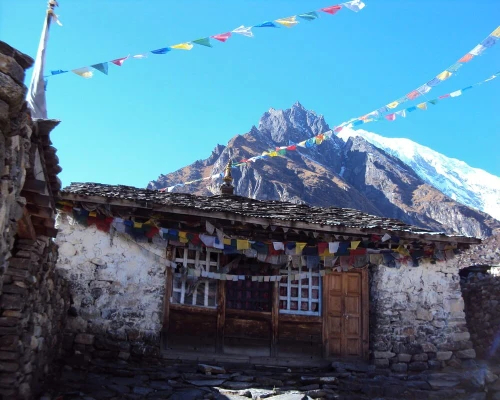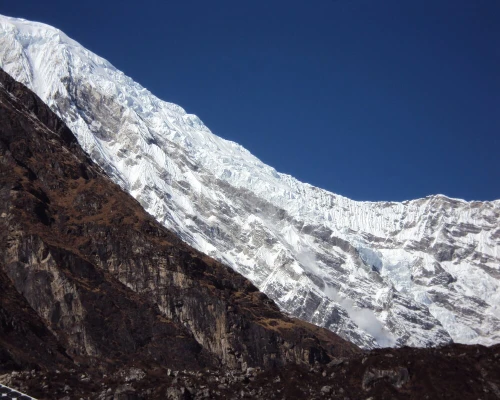Experience Required:
No prior trekking experience is required to join the Langtang Valley trek. It is a moderate-level trek that can be undertaken by individuals with average fitness levels. However, it is advisable to be physically fit and mentally prepared for the challenges of trekking in the mountains. Regular exercise and endurance training prior to the trek can help in better preparation. Additionally, it is important to follow the guidance of your trekking guide and take necessary precautions to ensure a safe and enjoyable trekking experience.
Pre-Trip Meeting:
Before embarking on the Langtang Valley Trekking adventure, we organize a pre-trip meeting at our Kathmandu office on the second day of your itinerary. This meeting takes place in the evening during dinner, where you will have the chance to meet your trek leader and fellow trekkers. It serves as an important opportunity for everyone to ask any questions they may have about the trek and to get to know each other. The pre-trip meeting helps create a sense of camaraderie among the group and ensures that everyone is well-prepared and informed before setting off on the Langtang Valley Trekking journey.
Equipment Check List:
While embarking on the Langtang Valley Trek, it is essential to have the necessary equipment with you. However, it is important to keep the weight of your belongings below 20kg to ensure a comfortable and manageable trekking experience.
Here are some of the equipment you will need for the Langtang Valley Trek:
- Backpack: A sturdy and comfortable backpack to carry your belongings during the trek.
- Trekking Boots: Proper hiking boots that provide good ankle support and have a sturdy grip for walking on varied terrain.
- Clothing: Layered clothing suitable for different weather conditions, including thermal base layers, trekking pants, T-shirts, fleece jackets, down jackets, waterproof jackets, and pants.
- Sleeping Bag: A warm and lightweight sleeping bag suitable for cold temperatures.
- Trekking Poles: Adjustable trekking poles to provide stability and support during steep ascents and descents.
- Headlamp: A headlamp with extra batteries for hiking during early mornings or in low-light conditions.
- Water Bottle: A reusable water bottle or hydration system to stay hydrated during the trek.
- Snacks: Energy bars, trail mix, or any preferred snacks for quick energy boosts along the trek.
- Sun Protection: Sunscreen, sunglasses, and a hat to protect yourself from the strong sun at higher altitudes.
- First Aid Kit: A basic first aid kit including band-aids, antiseptic ointment, pain relievers, and any personal medications.
It is important to pack wisely and prioritize essential items to keep the weight of your backpack manageable and comfortable throughout the Langtang Valley Trek.
A typical day:
A typical day during the Langtang Valley Trek starts with waking up and freshening up for the day. Afterward, you will have breakfast to fuel yourself for the day's trek. Once you have finished breakfast, you will pack your belongings and prepare yourself for the day's adventure.
The trek will then begin as you set off from your accommodation. You will walk for several hours, enjoying the scenic views and immersing yourself in the natural beauty of the Langtang Valley. Along the way, you may encounter local villages, lush forests, and panoramic mountain vistas.
After trekking for a few hours, you will stop for a well-deserved lunch break. This is an opportunity to rest, refuel, and enjoy a delicious meal amidst the picturesque surroundings.
Once you have finished lunch, you will resume your trek, continuing on the trail towards your destination for the night. The terrain may vary from steep ascents to gentle descents, but every step will bring you closer to your final destination.
As the day draws to a close, you will arrive at your night's accommodation. It could be a teahouse or a lodge, where you can relax, unwind, and recharge for the next day's adventure.
Throughout the day, you will have the chance to immerse yourself in the natural beauty of the Langtang Valley, interact with local people, and soak in the serenity of the Himalayan region. Each day's trek will bring new experiences and memories, making your Langtang Valley Trek an unforgettable journey.
Accommodation:
During the Langtang Valley Trekking, it is important to note that the availability of lodge facilities may be limited compared to more developed areas. As a result, you will need to be prepared to adjust and adapt to the accommodations and facilities that are available along the trekking route.
The lodges or teahouses in the Langtang region are relatively basic, providing essential amenities for trekkers. The rooms are typically simple, with twin beds and basic bedding. Bathroom facilities may be shared, and hot showers may not always be available.
It is advisable to bring your own sleeping bag, as it may be necessary in some lodges, especially at higher altitudes where temperatures can drop significantly. Additionally, it is recommended to carry a headlamp or flashlight for navigating in the evenings, as electricity supply can be limited.
Meals in the lodges are usually simple but hearty, offering a variety of local and international dishes. You can expect to find options like dal bhat (rice and lentil soup), noodles, pasta, momo (dumplings), and soups. While the menu options may be limited, the food is generally prepared fresh and provides the necessary sustenance for the trek.
It is important to maintain a flexible mindset and understand that the facilities and services may not be as extensive as in more urban areas. However, the beauty of the Langtang Valley and the warm hospitality of the locals make the trek a unique and rewarding experience.
By embracing the simplicity of the accommodations and being respectful of the local culture and customs, you can fully immerse yourself in the natural beauty of the Langtang region and create lasting memories along the way.
Insurance:
When you join the Langtang Valley Trekking, it is important to have comprehensive insurance coverage. This includes health or medical insurance, trip cancellation insurance, and emergency rescue evacuation insurance.
Health or medical insurance is essential to cover any potential medical expenses during the trek. It ensures that you have access to medical facilities and treatment if needed, whether it's for minor ailments or more serious conditions.
Trip cancellation insurance provides coverage in case you need to cancel or postpone your trek due to unforeseen circumstances. This can include personal emergencies, flight cancellations, or other situations that may prevent you from undertaking the trek as planned.
Emergency rescue evacuation insurance is particularly important for trekking in remote areas like the Langtang Valley. In the event of a medical emergency or serious injury, this insurance covers the cost of helicopter rescue or evacuation to a medical facility where you can receive proper treatment.
It is crucial to thoroughly review your insurance policy and ensure that it covers trekking activities, high-altitude regions, and emergency evacuation in Nepal. Check the terms and conditions, coverage limits, and any exclusions to make sure you have adequate protection.
Having comprehensive insurance gives you peace of mind and ensures that you are prepared for any unforeseen circumstances that may arise during the Langtang Valley Trekking. It is advisable to carry a copy of your insurance policy and emergency contact numbers with you throughout the trek.
Remember to consult with your insurance provider to understand the specific coverage details and requirements for trekking in the Langtang Valley. By having the right insurance in place, you can focus on enjoying the trek and exploring the stunning landscapes of the Langtang region.
Altitude Sickness:
he Langtang Valley Trek itinerary has been carefully designed to minimize the risks associated with high-altitude trekking, including the potential for altitude sickness. The trek includes acclimatization days and rest periods to allow your body to adjust to the increasing altitude gradually.
Acclimatization is a crucial process that helps your body adapt to the lower oxygen levels at higher elevations. It involves spending an extra day at certain points along the trek to allow your body to adjust and prevent the onset of altitude sickness. These acclimatization days are strategically placed at specific locations known for their scenic beauty and cultural significance, providing you with an opportunity to explore and experience the local culture.
During the acclimatization days, you can take shorter hikes to higher elevations and then descend back to lower elevations to sleep. This helps stimulate the production of red blood cells and increases your body's oxygen-carrying capacity. It also allows you to gradually ascend to higher altitudes, reducing the risk of altitude-related illnesses.
In addition to acclimatization days, the itinerary includes regular rest stops to ensure that you have time to recover and rejuvenate before continuing the trek. These rest periods allow your body to adapt to the physical demands of trekking and minimize the risk of exhaustion or overexertion.
It is important to follow the guidance of your trek leader and pay attention to your body's signals. If you experience any symptoms of altitude sickness, such as headaches, dizziness, nausea, or difficulty breathing, it is crucial to communicate this to your trek leader. They will assess your condition and make necessary decisions, which may include descending to a lower altitude or seeking medical assistance.
By incorporating acclimatization days and rest periods into the itinerary, the Langtang Valley Trek aims to ensure a safer and more enjoyable experience for trekkers. It is important to listen to your body, stay hydrated, and follow the guidance of your trek leader to mitigate the risks associated with high-altitude trekking and make the most of your adventure in the Langtang Valley.
Meals:
During the Langtang Valley Trek, you will be provided with three meals a day, which includes breakfast, lunch, and dinner. These meals will be prepared by the trekking team using fresh and locally sourced ingredients. The meals will be nutritious and designed to provide you with the necessary energy and sustenance for the trek.
The trekking team will ensure that you have a variety of options for each meal, including vegetarian and non-vegetarian dishes. The meals will typically consist of local Nepalese cuisine, as well as some international dishes. You can expect to enjoy a range of flavors and tastes, with options such as rice, lentils, vegetables, soups, noodles, pasta, bread, eggs, and meat (if preferred).
Please note that the availability of certain food items may vary depending on the lodge or tea house where you are staying. In higher altitudes, the menu options may be more limited, but the trekking team will make every effort to provide you with nutritious and satisfying meals.
In addition to the meals provided during the trek, there will be a welcome dinner upon your arrival in Kathmandu, where you can enjoy a traditional Nepalese meal and get to know your fellow trekkers. Similarly, a farewell dinner will be organized at the end of your trek to celebrate the successful completion of your journey. These dinners offer a great opportunity to immerse yourself in the local culture and cuisine.
Please let your trekking team know in advance if you have any dietary restrictions or specific food preferences, and they will make arrangements accordingly. It is also advisable to carry some energy bars, snacks, and water purification tablets with you during the trek to supplement your meals and stay hydrated. Overall, you can expect to be well-fed and taken care of throughout the Langtang Valley Trek, ensuring that you have the necessary sustenance to enjoy your trekking adventure to the fullest.








